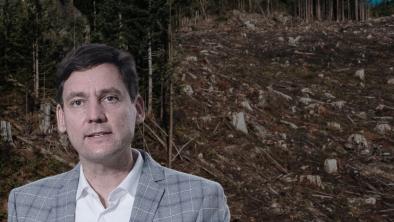It was a surprisingly nice day when we left the University of Victoria, considering it was mid-October on the west coast. The UVic Wilderness Committee club was off to spend a day at Bear Beach, and to check out some of the land that was being slated for development by Marine Trail Holdings. Bear beach is located just north of Jordan River and is in the middle of the Juan de Fuca Park, one of the most popular parks on Vancouver Island.
The development proposal, put forward by Marine Trail Holdings was to build hundreds of cabins, a recreation building, lodges and a helipad among other developments – over a period of 20 years right next to the Juan de Fuca trail.
As we drove up the thing that stuck out the most was the rural nature of the area. No other buildings were within 10 kilometres and who knows how far away the fire department was.
When we arrived at our destination, we started our hike down an old road. Much of land surrounding this road was slowly being taken over by Scottish Broom, and other invasive species that were taking advantage the fragmented ecosystem. Once we turned off the road, down a small path, we never saw those species again. What we did see was a forest of second growth trees, mushrooms, birds, and small animals, which would have been right in the heart of one of the main cabin developments, complete with septic fields that would have leeched into the soil and down to the beach, not far away.
When we made it down to the beach, we counted our blessings for having sunshine in one of the wettest places on the coast. We watched seals and otters playing in the water, not far from away. While exploring the beach we visited the creatively named rock-on-pillar.
This wild beach is also next to the route where Tar Sands oil tankers that leave Burnaby pass by. After walking along its rocky shores it’s easy to see what we could lose with only
a small spill from one of these tankers.
Overall it was a fantastic day. It was nice to take the time to reflect on what it took to stop the development and see what has been, at least for now, saved from chainsaws and bulldozers. It’s also important to remember that there is much work to be done if we hope to make sure that land is still wild in the future.
James Coccola | Outreach Coordinator
Wilderness Committee


